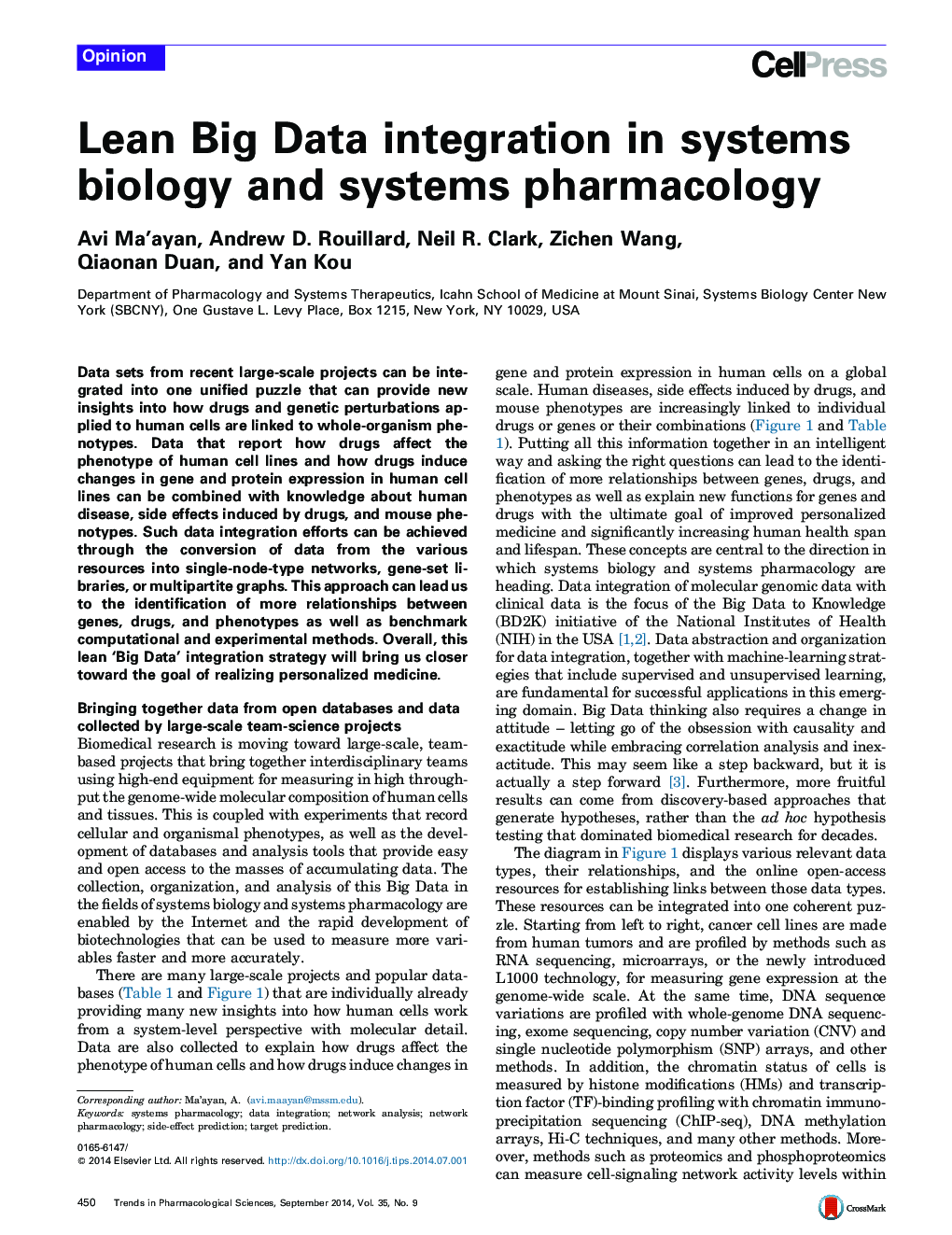| Article ID | Journal | Published Year | Pages | File Type |
|---|---|---|---|---|
| 2572721 | Trends in Pharmacological Sciences | 2014 | 11 Pages |
•Many relevant resources from systems biology and pharmacology can be combined into a general map.•Data from the resources can be converted into networks, gene-set libraries, and bipartite graphs.•Indirect relationships (e.g., matching drugs to patients) can be identified by data integration.•Combining independent sources can be used to validate computational and experimental methods.•Predictions can be improved when two independent networks are used to predict a third network.
Data sets from recent large-scale projects can be integrated into one unified puzzle that can provide new insights into how drugs and genetic perturbations applied to human cells are linked to whole-organism phenotypes. Data that report how drugs affect the phenotype of human cell lines and how drugs induce changes in gene and protein expression in human cell lines can be combined with knowledge about human disease, side effects induced by drugs, and mouse phenotypes. Such data integration efforts can be achieved through the conversion of data from the various resources into single-node-type networks, gene-set libraries, or multipartite graphs. This approach can lead us to the identification of more relationships between genes, drugs, and phenotypes as well as benchmark computational and experimental methods. Overall, this lean ‘Big Data’ integration strategy will bring us closer toward the goal of realizing personalized medicine.
